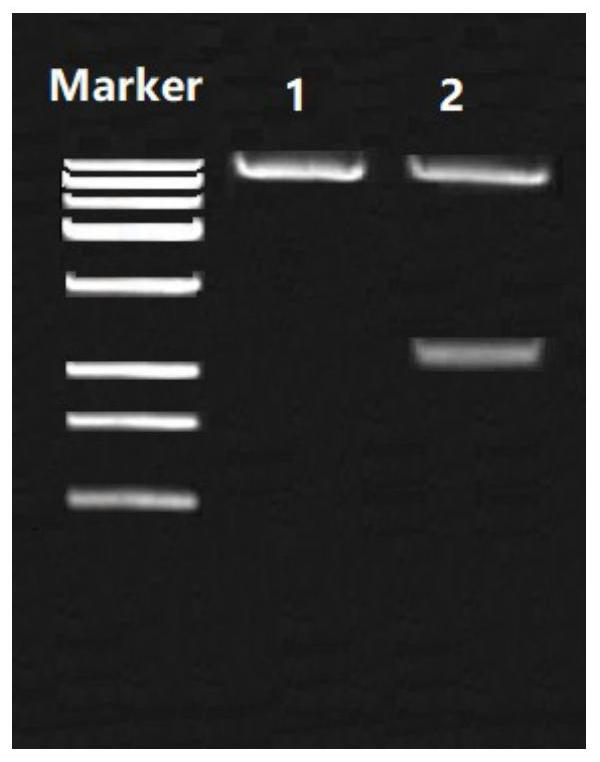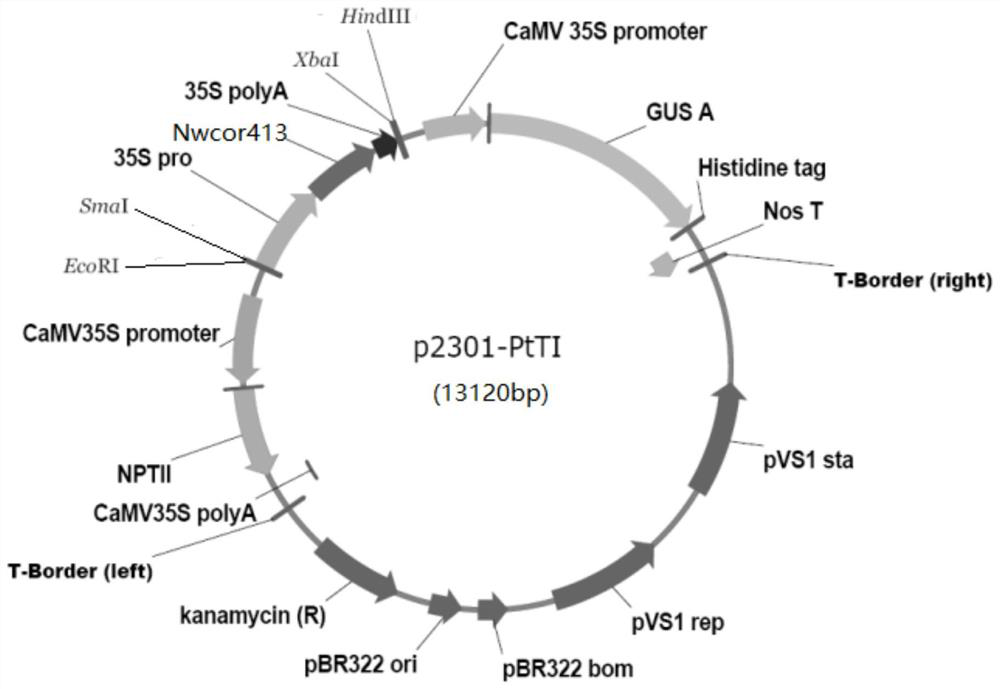Nepenthes wcor413-like protein and its application
A pitcher plant and protein technology, which is applied in the fields of biochemistry and molecular biology, can solve the problems of low temperature-induced protein cloning and application of pitcher plants that have not been reported, and achieve the effect of high expression abundance
- Summary
- Abstract
- Description
- Claims
- Application Information
AI Technical Summary
Problems solved by technology
Method used
Image
Examples
Embodiment 1
[0023] Example 1 Cloning of Nepenthes wcor413-like protein
[0024] Degenerate primers were designed according to the conserved region sequence of the wcor413-like protein (LOC107779465) gene of tobacco (Nicotiana tabacum):
[0025] Fw: 5'-attgattcagatttgaaggaaatt-3' (SEQ ID NO: 5);
[0026] Rv: 5'-acgatcccaacagtgtttgaaat-3' (SEQ ID NO: 6);
[0027] Using homologous cloning technology, the cDNA obtained by reverse transcription of the extracted Nepenthes RNA was used as a template, and a gene fragment of about 500 bp was obtained by PCR amplification, and then the full-length gene was cloned by 3' and 5' RACE technology. cDNA sequence, sequence analysis showed that: the full length of the gene cDNA is 913bp (SEQ ID NO: 7), the open reading frame is 612bp, and the precursor protein of 204 amino acids is encoded (electrophoretogram detection such as figure 1 shown). The low temperature-inducible gene of Nepenthes was named Nwcor413.
[0028] The cloning process of Nwcor413 g...
Embodiment 2
[0097] Example 2 Mutant acquisition
[0098] Using the p2300-35S-Nwcor413 plant expression vector as a template, the mutants were obtained by overlapping extension PCR, and the mutation sites were the 40th and 41st amino acid residues IM were mutated to TT. The plant expression vector p2300-35S-Nwcor413' was reconstructed and transformed into tobacco by Agrobacterium-mediated method to obtain transgenic tobacco plants with Nwcor413' gene driven by 35S promoter.
Embodiment 3
[0099] Example 3 Cold resistance test
[0100] Membrane structure of plants was damaged at low temperature, and the degree of damage increased with the decrease of temperature. The degree of membrane damage can be judged by the intracellular electrolyte extravasation rate, that is, the relative conductivity. The cold tolerance of plants is inversely proportional to relative conductivity. The semi-lethal temperature obtained when the electrolyte exudation rate reaches 50% can more accurately reflect the cold resistance of plants.
[0101] During the test, select wild-type tobacco, trans-Nwcor413 tobacco and trans-Nwcor413' tobacco leaves, the test material was washed twice with deionized water, and the surface moisture was absorbed with clean filter paper, cut into segments of the same size, and weighed 0.5g (each (repeated 3 times for each sample), put it into a penicillin vial, add 10ml of deionized water, put it in a vacuum drying box and vacuumize it. When the material is...
PUM
| Property | Measurement | Unit |
|---|---|---|
| control rate | aaaaa | aaaaa |
Abstract
Description
Claims
Application Information
 Login to View More
Login to View More - R&D
- Intellectual Property
- Life Sciences
- Materials
- Tech Scout
- Unparalleled Data Quality
- Higher Quality Content
- 60% Fewer Hallucinations
Browse by: Latest US Patents, China's latest patents, Technical Efficacy Thesaurus, Application Domain, Technology Topic, Popular Technical Reports.
© 2025 PatSnap. All rights reserved.Legal|Privacy policy|Modern Slavery Act Transparency Statement|Sitemap|About US| Contact US: help@patsnap.com



